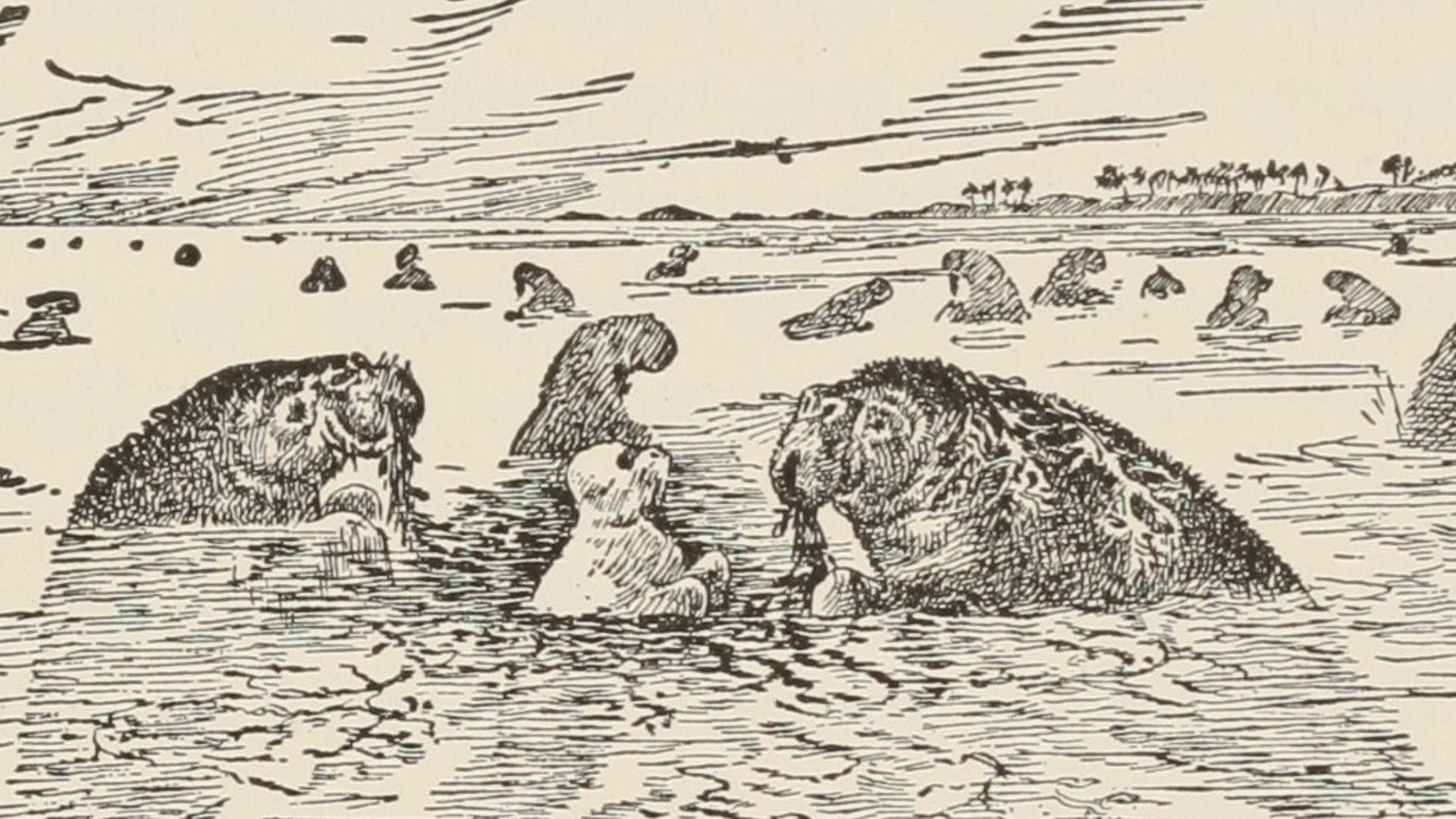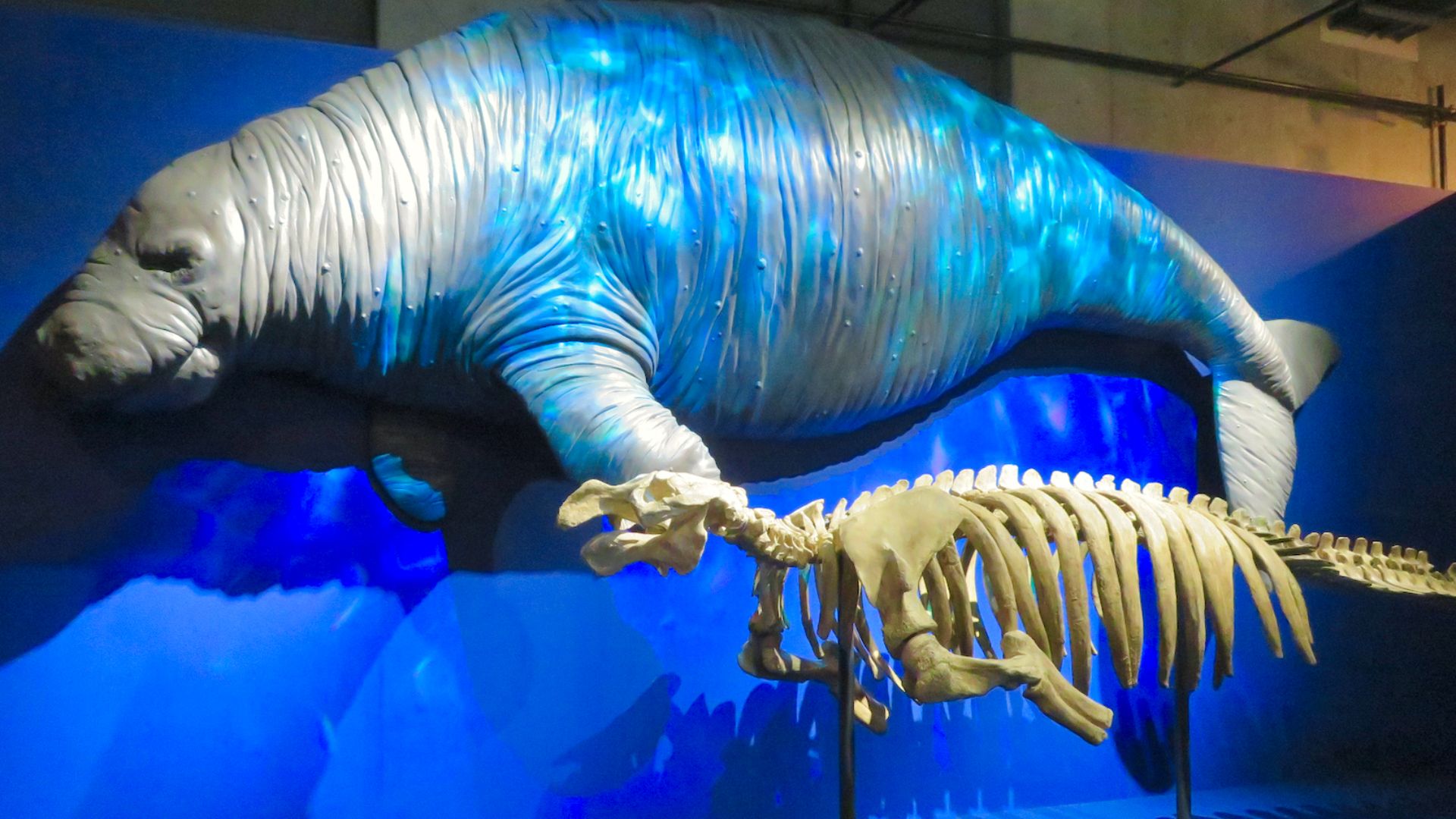 Unknown authorUnknown author on Wikimedia
Unknown authorUnknown author on Wikimedia
When talking about extinct animals, there a few heavy hitters: dodos, passenger pigeons, and thylacines. Though these animals are long gone, they can teach us valuable lessons about history. The history of animal extinction helps us understand not only changes to the natural world, but our relationship to it.
Most Ice Age megafauna such as mastodons and sabre-tooth cats went extinct in part due to the changing climate. Most, but not all. One prehistoric animal survived all the way up to the 19th century.
A Prehistoric Relic
It was far from what you would guess when you imagine an Ice Age animal, nothing so showy as a giant sloth or Irish elk. Steller's sea cow was a massive sirenian, the ancestor of today's manatees and dugongs. Unlike its modern-day relatives, Steller's sea cows lived in the icy waters of the Bering Sea.
Historical record shows them navigating the Aleutian Archipelago at the very tip of Alaska. Archaeological evidence suggests their range extended as far south as Monterey Bay, California. Rising ocean temperatures restricted their range as time progressed.
Steller's sea cow survived so long in part because they were well-suited to their environment, even as water temperatures rose. Their rough brown-black skin was heavily insulated with 4 inches of blubber. Measuring up to 30 feet long, they were twice the size of manatees.
Unlike manatees, they had no teeth, using keratin plates in their mouths to break down seaweed. Despite having dense bones, they were unable to completely submerge themselves. This made them difficult to drown, deterring predators such as orcas.
Steller's sea cows were social animals that lived in small family units. They were believed to be monogamous and gentle. Families would protect calves and injured members from predators.
Even if they were not hunted, Steller's sea cow was living on borrowed time. They'd survived the thaw, but their populations had been rapidly declining thanks to shifts in sea levels and temperatures. Kelp stock was growing low; they would have died out anyway.
The Beginning Of The End
 W.H. Drake (1926) or John Lockwood Kipling (1911) on Wikimedia
W.H. Drake (1926) or John Lockwood Kipling (1911) on Wikimedia
Part of the reason why Steller's sea cow survived so long was due to a lack of human contact. Pockets of them were hunted by the native peoples of Alaska and Siberia, but hunting was not as widespread as it was for seals and otters. Increased contact with humans brought this gentle giant to its doom.
The first recorded sightings of Steller's sea cow in recorded science were in 1741 by German scientist Georg Wilhelm Steller. Steller was a naturalist on expedition with Vitus Bering, for whom the Bering Sea is named. The expedition was shipwrecked for a year on its return journey from Alaska; and it was then that Steller's sea cow was first discovered, named, and researched by western scientists.
As mentioned, the sea cow was docile and friendly. Its lack of teeth and positive buoyancy made it an easy target for hungry explorers. Apart from ramming into boats—no idle threat, given its size—it had no means of dense.
Estimates believe that by the time Steller named his sea cow, there were only around 2000 remaining. They'd been dying for the better part of a millennium. All Steller and his crewmates did was speed up the pace.
Their meat apparently tasted like corned beef, their fat like almond oil. Not only were they delicious, they were incredibly profitable; their milk was turned into butter, and their hide into shoes and belts. Even the poorest of hunters could easily bag a sea cow; they simply floated to the surface.
While environmental factors contributed to their demise, increased contact with humans certainly did not help. In 1768, just 27 after their first discovery, Steller's sea cow were declared extinct. The last Ice Age animal went extinct a mere 250 years ago.
KEEP ON READING

The Manatee's Historical Relative That Was Hunted To Extinction
Unknown authorUnknown author on WikimediaWhen talking about extinct animals, there…
By Ashley Bast Nov 21, 2025
The Glass Delusion: When Historical Figures Believed They'd Shatter
Joseph Karl Stieler on WikimediaPrincess Alexandra of Bavaria had a…
By Ashley Bast Nov 20, 2025
Sophie Scholl: The Teen Who Defied Hitler and Paid With…
Unknown German police officer on WikimediaMost twenty-one-year-olds are preoccupied with…
By Cameron Dick Nov 20, 2025
Outlander: How A Romance Show Brought The Battle Of Culloden…
David Morier on WikimediaThe historical drama Outlander is a popular…
By Breanna Schnurr Nov 20, 2025
The Strange History of Mad Lighthouse Keepers
US Coast Guard on WikimediaLighthouse keepers have watched over the…
By Farva Ivkovic Nov 19, 2025
How Diana's Compassion Gave Her The Title, "The People's Princess"
John Mathew Smith & www.celebrity-photos.com from Laurel Maryland, USA on…
By Farva Ivkovic Nov 19, 2025

